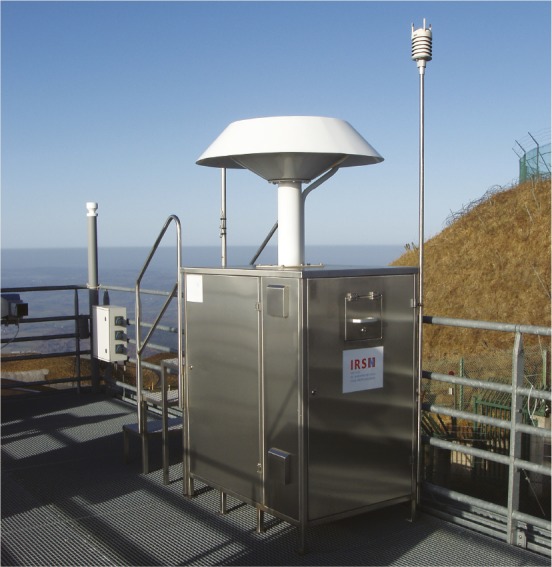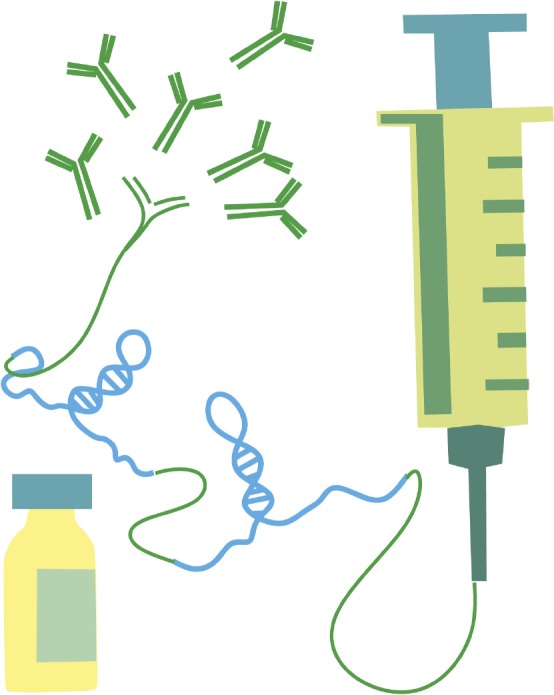Tracking the source of radioactive ruthenium

An air sampler stationed at the top of Puy de Dôme in central France.
In October 2017, significant atmospheric levels of the radioactive isotope ruthenium-106 (106Ru) were detected in many countries throughout Europe. The detected levels, although too low to endanger human or environmental health, suggested a sizeable release of 106Ru not associated with declared nuclear accidents. O. Masson, G. Steinhauser, et al. (pp. 16750–16759) compiled more than 1,100 atmospheric measurements and 200 deposition measurements of 106Ru levels from across Eurasia. The vertical distribution of 106Ru was inconsistent with an alleged disintegration of a radioisotope-carrying satellite. The highest 106Ru levels were detected over Romania. However, the detections occurred at multiple locations throughout the country simultaneously, suggesting that the 106Ru plume had widened to the width of Romania by that point, and therefore originated a considerable distance away. Models of air mass movements in the days preceding detection and 106Ru deposition patterns were consistent with a release from the Mayak nuclear complex in the Southern Urals of Russia. The 103Ru/106Ru ratio, combined with the absence of other radioisotopes, suggests that the 106Ru came from reprocessing of approximately 2-year-old spent nuclear fuel. According to the authors, the release might have occurred in conjunction with production of a cerium-144 source for a neutrino experiment. — B.D.
Deep learning and protein structure prediction
Proteins consist of amino acid sequences, folded into 3D structures that dictate function. Predicting protein structure is key to understanding biological processes, but existing methods are slow and computationally costly, particularly for proteins that lack abundant sequence homologs. Jinbo Xu (pp. 16856–16865) presents an approach that uses deep learning to accurately predict the interresidue distance distribution of a protein from approximately 60 sequence homologs. Using the approach, the author generated a 3D model of folding for the protein based solely on the predicted geometrical constraints. Requiring only 4 hours on a Linux computer running 20 central processing units, the method accurately folded 21 of 37 so-called CASP12 hard targets—particularly challenging structures established by the automated protein structure prediction community—and surpassed by a wide margin a popular approach that does not use deep learning. In addition, the author’s approach correctly folded 2 membrane proteins whose structures have defied prediction. Although further tests are needed, the findings suggest that protein structures can be accurately predicted with deep learning on a personal computer, according to the author. — T.J.
Neonicotinoids, honeydew, and insect mortality

Honey bees feeding on honeydew of whiteflies in citrus trees. Image courtesy of Jesica Pérez-Rodríguez (Universitat de València, València, Spain).
Neonicotinoids are among the most widely used insecticides and can harm beneficial insects that feed on contaminated nectar and pollen. Miguel Calvo-Agudo et al. (pp. 16817–16822) examined whether beneficial insects could also be exposed to neonicotinoids through contaminated honeydew. Honeydew is a sugar-rich substance excreted by phloem-feeding insects and an important nutrient source for many beneficial insects, such as pollinators and natural enemies of insect pests. The authors collected honeydew produced by citrus mealybugs (Planococcus citri) that fed on citrus trees treated with either water or the neonicotinoids thiamethoxam and imidacloprid, applied either via the soil or as a foliar spray. The honeydew was fed to 2 beneficial insect species: a hoverfly (Sphaerophoria rueppellii) and a parasitic wasp (Anagyrus pseudococci). A majority of hoverflies and wasps that fed on mealybug-produced honeydew from thiamethoxam-treated trees died within 3 days, as did approximately half of the hoverflies that fed on honeydew from foliar imidacloprid-treated trees, compared with 6–15% of beneficial insects fed on control honeydew. Honeydew from a significant fraction of insecticide-treated trees contained detectable levels of neonicotinoids. No neonicotinoids were detected in honeydew from control trees. The results suggest that beneficial insects could be exposed to neonicotinoids via contaminated honeydew, which is likely to affect a wider range of insects than contaminated nectar, according to the authors. — B.D.
Vaccine-triggered long noncoding RNAs

Schematic of lncRNAs (blue) transforming into antibodies (green).
Long noncoding RNA (lncRNA) molecules are RNA snippets without established protein-coding potential. More than 200 nucleotides in length, lncRNAs, of which there are more than 100,000 in human cells, serve a range of regulatory roles, including immune functions, such as T cell activation and cytokine production. To examine the role of lncRNAs in vaccine-mediated immunity, Diógenes de Lima et al. (pp. 17121–17126) analyzed gene expression in 2,059 blood samples from 17 cohorts of people vaccinated with the yellow fever or inactivated influenza vaccines. Vaccination altered the expression of hundreds of lncRNAs, a subset of which was correlated with antibody production. In particular, the influenza vaccine triggered FAM30A lncRNA, located within the immunoglobulin heavy chain gene on chromosome 14. FAM30A levels were higher in B cells compared with other immune cell types and correlated with antibody titers 7 days after vaccination. In a separate cohort of 26 2- to 4-year-old children immunized with an intranasal live attenuated influenza vaccine, the authors identified 55 lncRNAs tied to vaccination. The authors catalogued the expression and correlation data in a freely accessible online database termed VaccineDB, which can be mined by researchers attempting to test hypotheses around vaccination and gene expression. According to the authors, although the findings are preliminary and raise the need for functional validation studies, they suggest that lncRNAs may coordinate immune responses to vaccination. — P.N.


